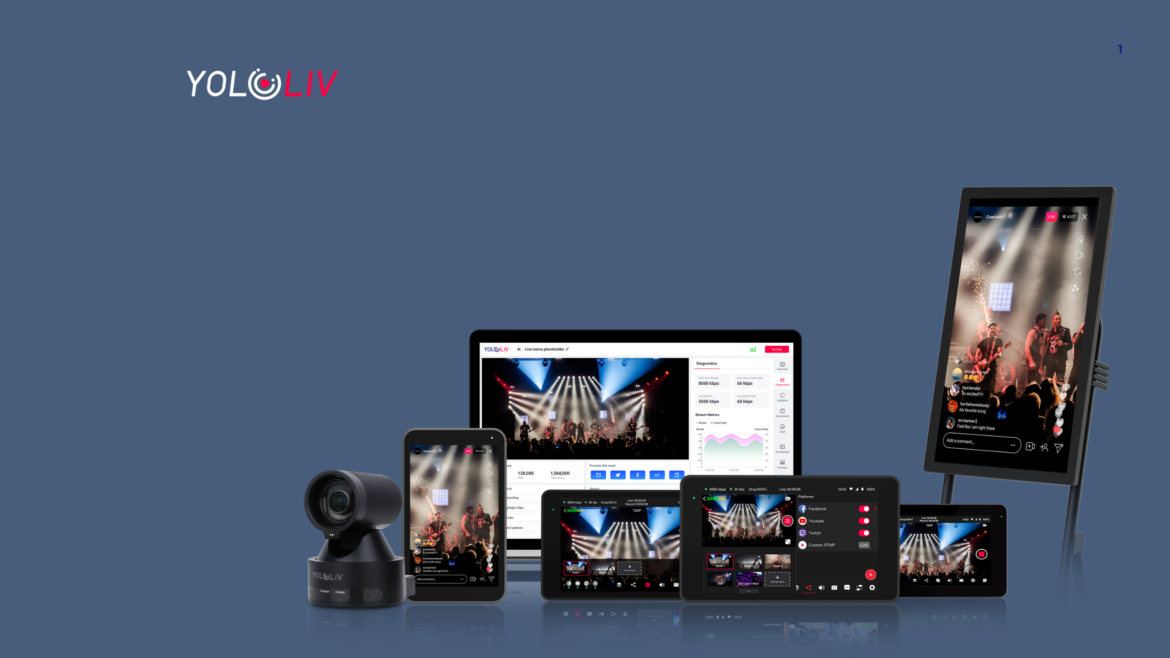Live broadcasting software has revolutionized the way we consume and interact with content online. From streaming live events, webinars, gaming, sports, and more, live broadcasting software has become an essential tool for businesses, content creators, and individuals alike. In this comprehensive guide, we will delve into the world of live broadcasting software, exploring its features, benefits, use cases, and best practices.
What is Live Broadcasting Software?
Live broadcasting software refers to applications or platforms that allow users to capture, encode, and transmit live video and audio content over the internet in real-time. It provides the ability to stream live events or pre-recorded content to a large audience, who can watch it on various devices such as computers, smartphones, tablets, and smart TVs.
Features of Live Broadcasting Software
Live broadcasting software comes with a wide range of features that enable users to create professional and engaging live broadcasts. Some of the key features include:
- Video and Audio Capture: Live broadcasting software allows users to capture video and audio from different sources, such as cameras, microphones, and screen recordings. This allows for a flexible and customizable setup, depending on the type of content being broadcasted.
- Encoding and Compression: Live broadcasting software encodes the captured video and audio into different formats that are suitable for streaming over the internet. It also compresses the content to optimize bandwidth usage and ensure smooth playback.
- Live Streaming: Live broadcasting software enables users to transmit the encoded content in real-time to various streaming platforms, such as YouTube, Facebook Live, Twitch, and others. This allows for seamless distribution of live content to a wide audience.
- Video Player and Playback: Live broadcasting software provides a built-in video player that allows viewers to watch the live content on their preferred devices. It also supports various playback features, such as pause, rewind, and fast forward, providing a user-friendly viewing experience.
- Analytics and Monitoring: Live broadcasting software offers analytics and monitoring tools that provide insights into viewer engagement, audience demographics, and other performance metrics. This allows users to measure the success of their live broadcasts and make data-driven decisions for improvement.

Benefits of Live Broadcasting Software
The use of live broadcasting software brings numerous benefits to businesses, content creators, and individuals alike. Some of the key benefits include:
- Reach a Wider Audience: Live broadcasting software allows users to reach a global audience, eliminating geographical limitations. This enables businesses to expand their reach, content creators to connect with their fans, and individuals to share their experiences with a larger audience.
- Engage with Viewers in Real-time: Live broadcasting software enables real-time interaction with viewers through live chat, comments, and social media integration. This fosters engagement, encourages participation, and creates a sense of community around the content.
- Monetize Content: Live broadcasting software provides various monetization options, such as pay-per-view, subscriptions, donations, and advertising. This allows businesses and content creators to generate revenue from their live broadcasts and create new revenue streams.
- Enhance Branding and Marketing Efforts: Live broadcasting software allows businesses to showcase their brand, products, and services in a dynamic and engaging way. It also provides opportunities for marketing and promotions during live broadcasts, increasing brand awareness and customer engagement.
- Flexibility and Convenience: Live broadcasting software offers flexibility in terms of content creation, scheduling, and distribution. It allows users to create and manage live broadcasts at their convenience, making it a versatile solution for different types of content and events.
Use Cases of Live Broadcasting Software
Live broadcasting software is being used in various industries and for diverse purposes. YoloCast is one of the great platforms. Some of the popular use cases include:
- Events and Conferences: Live broadcasting software is commonly used to stream
events and conferences in real-time, allowing remote attendees to participate and engage in discussions, presentations, and workshops. It eliminates the need for physical attendance and provides a cost-effective solution for event organizers to reach a wider audience.
- Webinars and Online Training: Live broadcasting software is widely used for hosting webinars and online training sessions. It allows trainers and educators to deliver interactive and engaging content to participants in real-time, facilitating knowledge sharing and collaboration.
- Gaming and Esports: Live broadcasting software is a popular choice for streaming gaming and esports events. It enables gamers and content creators to showcase their gameplay, interact with viewers, and monetize their content through sponsorships, donations, and advertising.
- Sports and Fitness: Live broadcasting software is utilized for streaming sports events, fitness classes, and competitions. It allows sports organizations, gyms, and trainers to provide live coverage of games, matches, and workouts, attracting a larger audience and creating a virtual community around the content.
- News and Journalism: Live broadcasting software is used by news organizations and journalists for real-time reporting and coverage of news events, interviews, and press conferences. It allows for immediate dissemination of information to a global audience, enhancing journalistic efforts and audience engagement.
Best Practices for Using Live Broadcasting Software
To ensure a successful live broadcasting experience, it is essential to follow best practices. Some of the key best practices include:
- Test and Optimize Equipment: Before going live, thoroughly test and optimize your video and audio equipment, including cameras, microphones, and internet connection. Ensure that they are functioning properly and provide high-quality output.
- Plan and Prepare Content: Plan and prepare your content in advance, including script, visuals, and any additional media. Rehearse the content and be well-prepared to deliver it smoothly during the live broadcast.
- Choose the Right Streaming Platform: Choose the right streaming platform that aligns with your goals and target audience. Consider factors such as platform features, audience reach, monetization options, and ease of use.
- Engage with Viewers: Actively engage with viewers during the live broadcast through live chat, comments, and social media. Respond to their questions, comments, and feedback, and encourage participation to create a sense of community.
- Promote and Market Your Live Broadcast: Promote your live broadcast in advance through various channels, such as social media, email, and newsletters. Create buzz and excitement around the event to attract a larger audience.
- Monitor and Analyze Performance: Monitor the performance of your live broadcast using analytics and monitoring tools provided by the live broadcasting software. Analyze viewer engagement, feedback, and other metrics to evaluate the success of your broadcast and make improvements for future broadcasts.
In Conclusion
Live broadcasting software has become an indispensable tool for businesses, content creators, and individuals to create, distribute, and monetise live content online. With its features, benefits, and use cases, it offers endless possibilities for engaging with a global audience, expanding reach, and generating revenue. By following best practices and leveraging the power of live broadcasting software, you can unlock new opportunities and create memorable live broadcasting experiences.
11,528 total views, 11 views today

Aura, the marketing specialist at YoloLiv. With her extensive work experience and motivated work attitude, she continually encourages user issue solutions and feature request fulfillment in order to satisfy the demands of more people.


